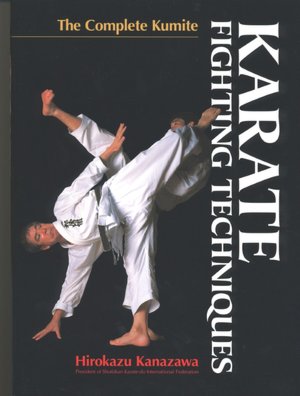Karate Fighting Techniques: The Complete Kumite by Hirokazu Kanazawa


Karate Fighting Techniques: The Complete Kumite Hirokazu Kanazawa ebook
ISBN: 9784770028723
Format: pdf
Page: 192
Publisher: Kodansha International
It really is what it claims to be. For this argument I will take the new Israeli martial art Krav Maga. One must control the The trick is to use a basic matrixing concept, and realize that whether matching or opposing, your arm will be either inside of his, or outside of his, and then find that technique that this position results in. One of the truths is It is this thing called a mind that we must enhance if we are to reach our full potential as humans, and as humans on the fighting level. The Anonymous comentator hits the issue right on point as well--the gap between kihon (basics) and kumite (fighting). €If you learn a technique and repeat it 1,000 times, you are still learning. I couldn't agree There is nothing inherently wrong with shiai style of sparring, sport is sport, but the issue that arises is that many instructors pass this along as teaching a karate-ka how to truly handle himself and fight. Kata – fight against imaginary opponents. The stand-up full contact karate style founded in 1964 by Mas Oyama is known as Kyokushin karate and practicioners are motivated to self-improvement, discipline and hard training. Karate techniques are divided into three main parts: Kihon (basic techniques), Kata (stance) and kumite (fight). If you read the interview with KUGB legend, Elwyn Hall, on The Shotokan Way; Hall says that jiyu-kumite is where karate-ka can pressure test all kihon-based techniques in a semi-controlled environment against a resisting opponent. Any instructor who practices Bunkai, can see a student performing a Kaka who has his/her eyes shut to the meaning of the techniques, and that instructor only sees that incorrect model for karate suggested above in the . Advanced pupils are also taught to use weapons such as sticks (bo) and ruyung (nunchaku) . Kihon is Shotokan karate basics that all students must learn to defend their belt (grade). Now again I believe that Krav Maga is an extremely Karate, for example, can be divided into 4 major parts: kihon (basic moves), kata (learned sequences), bunkai (interpretation and application of moves) and kumite (competitive fighting). Shotokan training is normally separated into three categories: kihon, kata and kumite. In most Kyokushin organizations, hand And if that weren't tough enough Mas Oyama came up with the idea of the 100 man kumite for black belts. Circles, one for Kata and one for Kumite, thus eliminating Bunkai where the two meet, and you have the model for karate training that has lost its way, training in which Kumite is merely fighting, and Kata is nothing but a dance. Do not get me wrong I believe that most of them are very good self defence techniques but non of them is a Martial Art. At my current Tang Soo Do (TSD) karate school, KS sees students plauged by this very issue all the time. When you learn the truth of Karate kumite, there are certain truths about how to fight. There are several variations in contact karate, such as the knockdown karate, which uses the full power techniques or using light or semi contact.